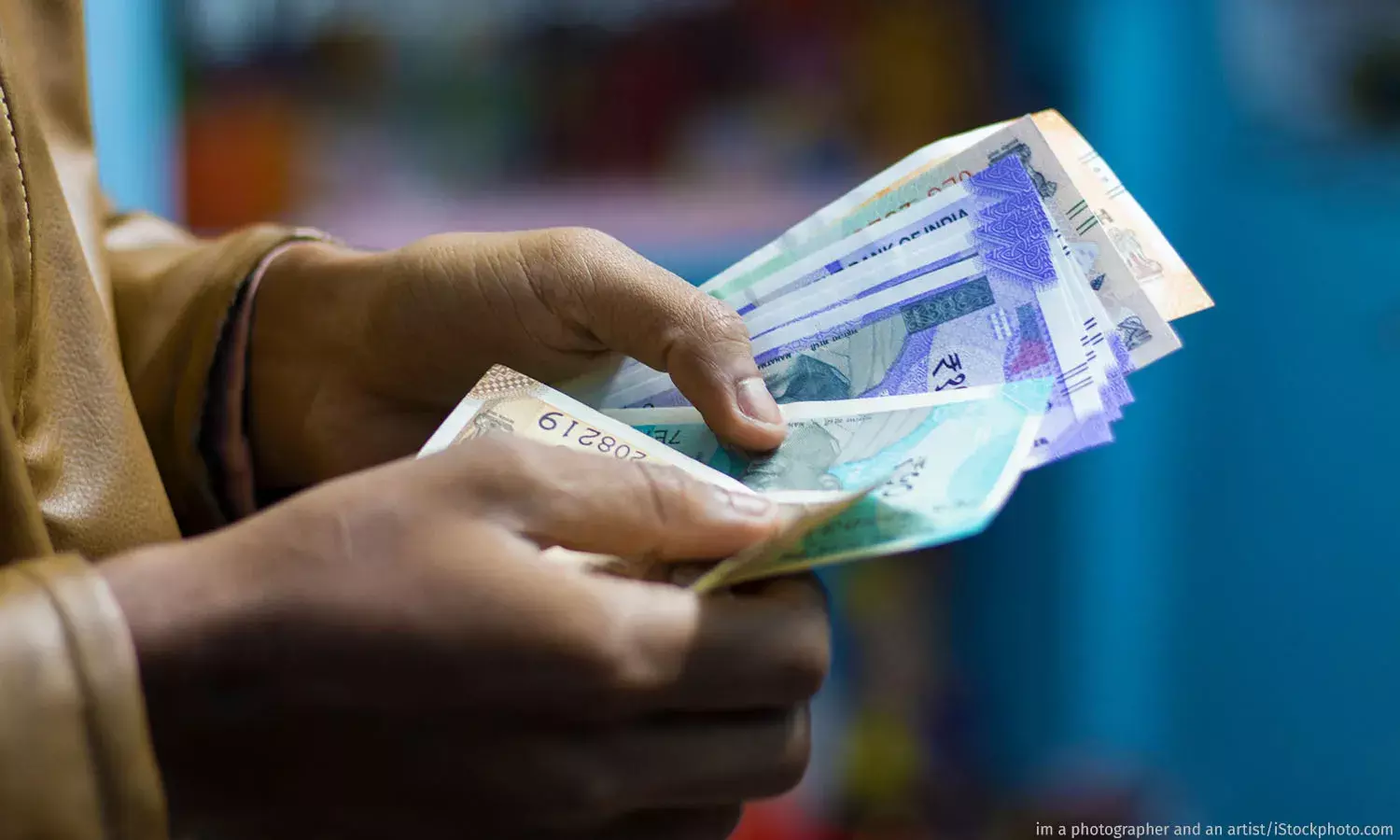The Changing Nature Of Indians’ Savings, Debt
Deposits still form the highest share of financial savings for Indian families, but other instruments are seeing increases, our analysis shows

Pune: In a decade to 2023-24, the structure of Indian households’ financial savings has changed. Deposits still hold the lion’s share, but instruments such as stocks, small savings and government bonds, and provident and pension funds have seen a rise in popularity.
Similarly, while banks continue to be the biggest lenders to Indian families, loans from non-banking financial companies saw an increase.
Overall, as of March 2024, Indian households had financial assets worth about Rs 320 trillion ($3.7 trillion) and liabilities of Rs 121 trillion ($1.4 trillion).
In 2022, IndiaSpend reported on how India’s poorest households were increasingly relying on debt to meet everyday expenses, especially during and after the Covid-19 pandemic. The report noted a shift in borrowing patterns--urban poor turning to institutional credit, while rural poor continued to rely on moneylenders.
In six charts, we examine how Indian households are saving and borrowing, using data from the Ministry of Statistics and Programme Implementation (MoSPI) and the Reserve Bank of India (RBI).
In 2022-23, the latest year for which data have been published by MoSPI, Indian households added financial assets worth Rs 29.7 trillion ($340 billion) and liabilities worth Rs 15.6 trillion ($180 billion). With an estimated 294 million households, this means, on average, a family added Rs 1 lakh in financial assets and Rs 53,000 in liabilities that year.
Total financial assets, which are reported as gross financial savings in MoSPI data, include household cash, deposits, and other financial investments. Liabilities refer to borrowings from banks and non-bank lenders. The difference between these two figures is the net financial savings for that year.
The Reserve Bank of India’s preliminary estimates for the year 2023-24 show that financial assets rose to Rs 34.3 trillion while liabilities stood at Rs 18.8 trillion. That is, liabilities were about 55% of assets--the highest level since at least 1970-71. As recently as 2021-22, this figure stood at 34%.
Between 2020-21 and 2022-23, total financial assets declined 3% from Rs 30.7 trillion to Rs 29.7 trillion, while liabilities more than doubled to Rs 15.6 trillion. Simply put, Indians are saving less and borrowing more.
How Indians save
Deposits, as we said, remain the most popular mode of savings for Indian households. But over a decade, the share of deposits in financial assets fell from 56% in 2013-14 to 41% in 2023-24, our analysis shows.
During this period, shares and debentures rose from 2% of financial assets to 9%, as did “claims on government”--or small savings schemes and government bonds. Similarly, the share of pension and provident funds rose from 15% to 21%.
In March, the government said in Lok Sabha that the new tax regime proposed in the Union Budget 2025-26, which waives income tax for those earning up to Rs 12 lakh, is a reform measure aimed at reducing taxes for the middle class and leaving more money in their hands to boost household savings. Other measures such as support for employment, skill development, and ease of doing business were also cited as efforts to strengthen household finances.
However, access to these instruments is not equal across income groups. As IndiaSpend reported in September 2021, many poor households had to dip into their savings to cope with job losses, high healthcare expenses, and rising prices during and after the COVID-19 waves.
Rising debt through non-banking financial institutions
Loans by financial corporations and non-banking companies are rising, the data show, even as bank loans account for the highest share of liabilities added. In the decade to 2022-23, bank loans fell from 92% of liabilities to 76%, while NBFC loans grew from 2% to 21% during the same period.
Household debt in India rose over the past three years and stood at 42.9% of GDP as of June 2024, according to the RBI’s Financial Stability Report 2024, which it said is relatively low compared to other emerging market economies. This rise has been driven more by a growing number of borrowers rather than an increase in average indebtedness, the report added.
“Undeniably, the past four years have witnessed unchecked growth in consumer lending, arguably fueled by overall economic growth,” IndiaSpend founder-editor Govindraj Ethiraj wrote in October 2024. “However, India is also experiencing levels of borrowing and market speculation that seem disproportionate to other economic indicators.”
Net savings lowest in five decades
As Indian families added liabilities faster than assets, as we said above, the net financial savings--or the surplus that households have after accounting for liabilities--fell to Rs 15.5 trillion, down 33% from Rs 23.3 trillion in the first year of the Covid-19 pandemic, data show.
A May 2024 report by CRISIL noted that households have been borrowing at a faster pace than they’ve been saving since the Covid-19 pandemic.
Taken as a percentage of India’s gross domestic product, liabilities doubled in the decade to 2023-24, from 3.2% of GDP in 2013-14 to 6.4% in 2023-24. During the same period, total assets rose from 10.6% of GDP to 11.7%. Net financial savings, therefore, were at their lowest in five decades at 5.3%.
With a “sizeable part” of household credit being used for real estate, “there has been a compositional shift in total household savings away from financial savings in favour of physical savings”, the RBI noted in January this year.
MoSPI data show that Indian households’ savings in physical assets rose from Rs 1.5 trillion in 2012-13 to Rs 3.5 trillion in 2022-23.
All that glitters
Gold and silver continue to be a consistent savings option for Indian households. In 2022-23, Indian households added Rs 63,397 crore in gold and silver ornaments, 73% more than a decade earlier.
That doesn’t mean households are buying more gold and silver. During that period, prices of silver rose 21% while gold prices rose 95%, RBI data collated by Dataful show.
An average Indian household holds 84% of its wealth in physical assets, 11% in gold bullion and the residual 5% in financial assets, according to the All India Debt and Investment Survey 2012 by the National Sample Survey Office, as cited in this May 2020 research brief by Dvara Research.
Poorer households hold a higher share of their wealth in gold compared to richer households: Households with wealth under Rs 1.79 lakh hold 24% of their wealth in gold whereas the wealthiest segment with wealth above Rs 14.8 lakh hold only 2% of their total wealth in gold.
We welcome feedback. Please write to respond@indiaspend.org. We reserve the right to edit responses for language and grammar.


